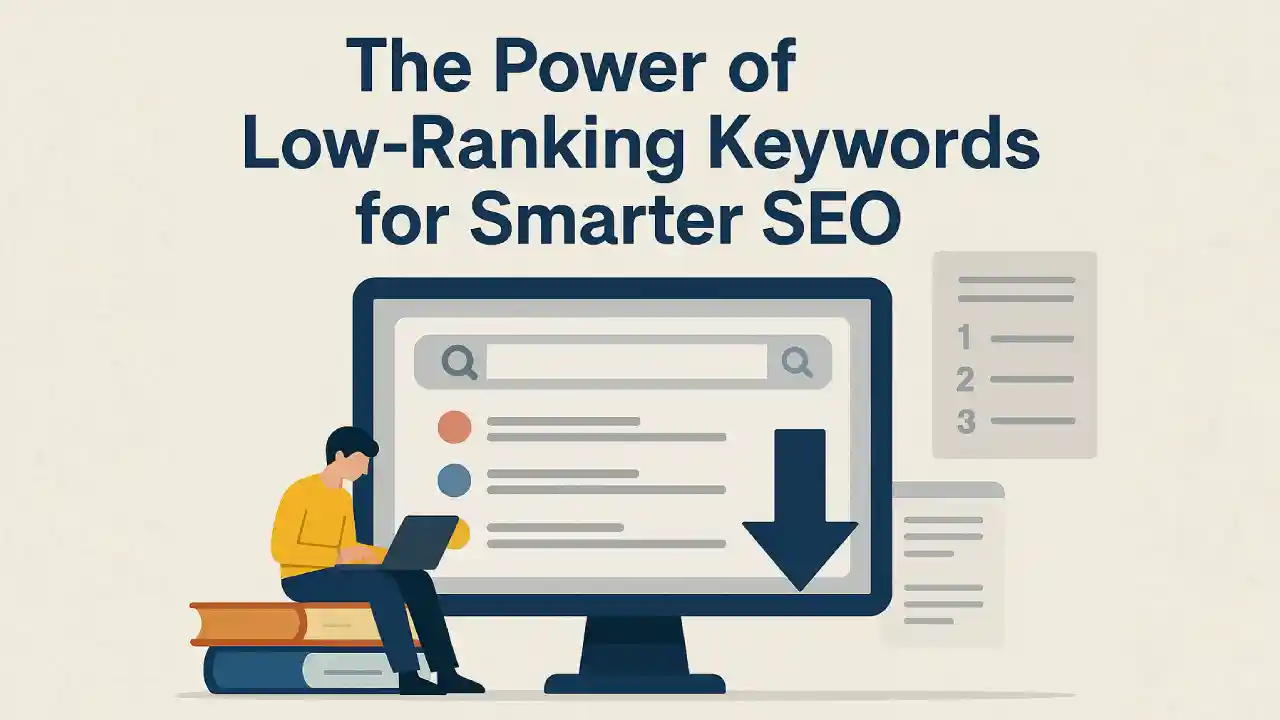Published by NewsPR Today | August 2025
Google’s Martin Splitt and John Mueller addressed lazy loading and its SEO implications in the most recent episode of the “Search Off the Record” podcast, Episode 98, released Aug. 21, 2025.
They debunked myths and also shared technical learnings for developers and SEO folks on the impact of optimizing by lazy loading on a website’s search performance.
What is Lazy Loading?
The Developer Relations Engineer at Google, Martin Splitt, began by discussing what lazy loading is. Lazy loading is a website performance optimization method that waits to load resources such as images or scripts until you need them instead of loading everything at the initial page request.
Lazy loading is the process of delaying the loading of content that is not immediately visible to the user in order to save resources, like network bandwidth and battery power. And by this, I mean that irrelevant content – like user-hidden images for example – only load up, when the users scrolls down or interacts with the page.
Why Lazy Loading is Crucial for Great Website Performance
The primary reason for lazy loading a website is to improve the loading time. As Splitt said, lazy loading helps to prevent “work that produces nothing,” in other words, not forcing the browser to do this for content the user might never scroll to. Loading that straight away would just add more load to the page, especially if no one ever reads below the fold.
“Lazy loading not only speeds up load times but also reduces the usage of system resources. Lazy loading is even more important on mobile, where both network and battery are limited. Without lazy loading, unnecessary assets would be pre-loaded, possibly leading to horrible performance, increasing the consumption of the battery and even slowing down the browsing experience.
Splitt also noted the progress of lazy loading technology. A couple of years ago, browsers added a native lazy loading attribute specifically for images and iframes, he said. With this release, developers are now able to add the loading=”lazy” attribute to images and the browser will perform lazy loading for the developers.
This is a DYI lazy load approach, but it dramatically simplifies the way you’d implement lazy loading and no longer need any custom JavaScript solutions.
Performance Gains Lead to Widespread Uptake in Lazy Loading
Performance has been a major driver behind the lazy loading adoption. By speeding up the load time of the web page lazy loading increases the UX, mainly for mobile users on slower internet connections. Sites can feel faster and more responsive by loading only the content that’s immediately needed.
The laziness of loading has more advantages than just fast loading. Lazy loading also lessens the amount of work for the browser, Splitt said. Instead of having to load all of this content up front, which can slow page load time, lazy loading enables the browser to prioritize which resources (images, scripts, etc.) are necessary for interaction with a specific set of content.
It also comes with a great way to save resources – lazy loading 2. With a second load of non-critical resources, the browser has more bandwidth and system resources available to focus its attention on essential aspects of the page, such as above-the-fold images, critical scripts, and interactive elements. This significantly improves the overall experience, particularly on lower end devices or slower internet connections.
The Lazy Loading Revolution: Native Browser Support
The most notable is the new native attribute for images and iframes. Previously, developers would have to use JavaScript libraries or custom code to create lazy loading, which would complicate the process and cause errors. Now that the loading=”lazy” attribute has been introduced to browsers, browsers can now lazy load natively without extra JS.
WordPress has adopted this built-in lazy loading, and it is now the standard for images in WordPress websites. This ubiquitous use of the loading=”lazy” attribute demonstrates how simple and effective the solution is now. And subsequently, many developers and webmasters today use the browser-native solution, without any custom implementations, nor third-party libraries.
SEO Challenges with Lazy Loading
Lazy loading certainly can be a huge performance boost but if you don’t apply it properly it could become a problem for SEO. Throughout the podcast, Splitt and Mueller reviewed common mistakes makers commit that can harm your SEO.
Lazy Loading — above the fold One of the biggest SEO mistakes a website can make with lazy loading is to use it on above the fold images (without any type of lazy loading workaround). Browsers have a resource scanner that prioritizes loading of images, and (other) visuals that are currently in sight on the page, Splitt noted. When critical images are subject to lazy loading, it gets in the natural way for that and delays the page rendering.
For example a hero image or main content image may well be lazy loaded and the browser does not know that it should give this extra importance when it comes to load time. This delay can create a poor user experience, and can even affect your SEO performance as search engines like Google factor in page load times to their rankings.
Lazy Loading and Core Web Vitals So in lazy loading, the problem is that you don’t load it right away, but the other way around is the code.
Core Web Vitals is a collection of user experience metrics that are used by Google to measure performance of a website in terms of loading time, interactivity, and visual stability. One of the essential indicators is Largest Contentful Paint (LCP) – the time it takes before the largest element on the visitors’ page appears on the screen. Bad lazy loading can harm LCP because it might also delay the load of important visuals or elements that need to be shown as soon as possible.
If done inappropriately though — such as lazy loading images that should be loaded immediately — it may delay LCP, Splitt said. And this can impact a website’s ranking, as LCP is one of the signals Google uses to judge how well a page is doing. Although ranking impact is typically minimal, lazy loading problems can impact user experience, including Core Web Vitals scores.
Preventing common errors in implementing lazy loading
The podcast also spotlighted some implementation mistakes that developers can make. An easy mistake to make is lazy loading images that are visible to the user when the page loads; for example, a hero image or a key content image. These images should be immediately loaded so that the page can be rendered and displayed to the user as fast as possible.
It’s also a good idea to always define an images width and height if you are using lazy loading. If you don’t, it can lead to layout shifts (where page elements shift around as images load). This makes for a bad user experience, plus it can damage your Core Web Vitals scores of your website, especially the Cumulative Layout Shift metric (CLS) which is all about visual stability.

Impact on Search Engine Indexing
One of the key issues of lazy loading is the impact it can have on search engine discovery and indexation. Although traditional ‘lazy loading’ (loading=”lazy”) doesn’t tend to create problems, custom lazy-loading solutions can.
Many custom lazy-loading libraries use attributes like “” instead of the regular “src” attribute for images, Splitt explained. This can confuse Google’s crawlers, as these would expect the “src” to have the image URL. If a library of lazy loading is using a custom attribute and is not populating the “src” attribute appropriately, Google cannot index the image and it will have poor visibility in search engine result page.
It’s up to developers to ensure that lazy loading is done correctly so that it doesn’t harm indexing. This includes using ‘normal’ attributes for images and making sure that any JavaScript libraries load the correct attributes when they load resources.
Verifying Lazy Loading Implementation
SEO experts can confirm whether lazy loading is generating as anticipated with the likes of Google Search Console. URL Inspection Tool Test it now The URL Inspection Tool provides detailed information as well as solved blocked resource issues in depthInspect the rendered HTML of a page and the resources that are loaded with it, such as images, CSS, or JavaScript The URL Inspection Tool provides detailed information about a page’s appearance in the Google Search results, including whether the page is mobile-friendly and information about the page’s canonical URL.
The tool also allows you to submit a page for re-crawling if you’ve recently made changes to it Market Muse Landing Page Analyzer Test it nowHow To Use The URL Inspection Tool.
You can use this tool to test and should consult Google’s Guidance for JavaScript Bookmarking: It’s important to note that JavaScript should not be used to create bookmarks. If you find expected image urls in the “src” attribute of this html, then the lazy loading is working properly.
Another good method would be studying indexing of the lazy-loaded content. If it’s not appearing in search results other resources it’s lazy loading may suggest it’s not done right.
Specifics for Video Lazy Loading
Although lazy loading for images is an old technique, the same strategy for videos is quite difficult and is challenging to apply. Videos are heavy and resource-consuming files, so lazy loading is extremely useful in this usecase. But loading videos into the DOM only when they are in the viewport can make it tricky to ensure a good user experience without too much flickering.
Related Article: Schema Markup Like a Pro: Techniques That Actually Improve Rankings
The videos would often be loaded with an image designed as a placeholder (the “poster”) while the video itself starts to download, Splitt said. This enables the page to present something visual, while waiting for the whole video to load. Some video platforms, such as those that utilize progressive loading or streaming protocols, handle lazy loading on an automated basis.
Privacy legislations and especially in EU areas also have to do with video lazy loading. Certain websites are utilising lazy loading to postpone the automatic loading of 3rd party video material until users have consented in line with privacy regulation.
Best Practices for Lazy Loading
Method II (Maximization of LL Benefit with No Harm to SEO): Best practices must be to have maximum advantage of lazy loading without any damage on SEO. Lazy loading should not apply to critical content, images below the fold. Also, hero images and main content images should be loaded asap, by definition.
For decoration images, it’s a best practice to apply with CSS rather than having them in HTML as image tag. This method allows decorative images to be used as designed without influencing SEO, as the decorative image can not rank in the search results.
We’ve also seen that using the native loading=”lazy” attribute is the simplest (and the more fail-safe) way to do lazy loading on most websites. This out-of-the-box, browser feature eliminates the hassle and avoids the mess of custom JavaScript libraries.
Conclusion
Lazy loading Lazy loading is a great way to speed up a website, especially on mobile. When implemented correctly, it can also reduce resources and speed up loading times, improving the user experience. Improper usage can be bad for SEO (e.g., by lazy-loading important content or failing to index lazily-loaded content properly).
While it’s tempting to lazy load your website to improve page load times, you can follow best practices by using the native lazy loading attribute and not lazy loading for critical content can optimize your website for performance and search engines.




